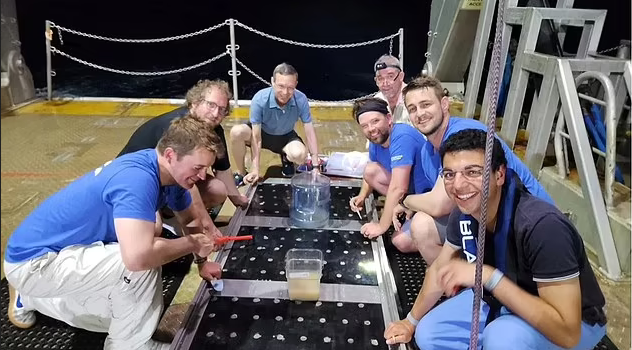Scientific excitement is brewing as a top physicist from Harvard, Avi Loeb, suggests that concrete evidence of intelligent extraterrestrial life may be revealed within a month. The intriguing discovery stems from the examination of minute metal fragments that were recovered from the crash site of a mysterious meteor-like UFO in the Pacific Ocean back in 2014.
These metal fragments possess remarkable strength, leading Professor Loeb to speculate that they might be composed of an artificial alloy, possibly originating from an alien spacecraft.
‘There is a chance that it’s artificial – that it’s a spacecraft,’ said Loeb, leader of the recovery efforts to dredge the fragments off the coast of Manus Island this June.

Avi Loeb, who also serves as the director of the Institute for Theory and Computation at the Harvard-Smithsonian Center for Astrophysics, has spearheaded efforts to analyze these peculiar fragments. Expressing optimism, he revealed that the results of the current analysis could potentially mark humanity’s “first contact” with extraterrestrial civilizations. He anticipates receiving further news about the findings within a month.

The scientific community’s curiosity is piqued, and four research institutions are currently involved in scrutinizing the recovered metal fragments. Collaborating with scientists from Germany, Papua New Guinea, and two prestigious universities in the United States, Loeb’s team aims to determine the fragments’ atomic isotopes, chemical composition, and other essential characteristics to ascertain whether they indeed possess an otherworldly origin.
‘We are in the process of finding out, within a month or so, what this meteor was made of and whether it is perhaps technological in origin or not,’ Loeb said.
Named “Interstellar Meteor 1” or IM1, the object in question holds an intriguing position in NASA’s Center for Near-Earth Object Studies (CNEOS) meteor catalog. Ranked first in terms of material strength among all 273 fireballs listed, IM1’s unique qualities have aroused considerable scientific interest.

‘It was moving faster than 95 perecnt of the nearby stars near the Sun because of some propulsion it had,’ according to Loeb. ‘It was also made of some very tough material.’
Intriguingly, Avi Loeb has not ruled out the possibility that IM1 could have been an alien probe. The object is estimated to be approximately 3 feet in diameter and weigh about half a US ton. During its entry into Earth’s atmosphere, it shed tiny molten metal droplets, which further adds to the enigma surrounding this celestial visitor.
The size of the meteor-like object is comparable to humanity’s own spacecraft, such as Voyager 1 and Voyager 2, currently venturing deeper into space. Voyager 2, in particular, has already achieved the status of an interstellar object, over 12.3 billion miles away from Earth, though it continues to transmit data back to NASA.
Professor Loeb remarked that if IM1 turned out to be a collision between an alien probe similar to Voyager and a planet, it could manifest as a meteor, sparking further speculation about its possible extraterrestrial origin.

Despite the excitement and intrigue surrounding this potential discovery, scientists remain cautious and committed to the rigorous scientific process. Peer review and scrutiny will play an essential role in validating the findings before any definitive conclusions are drawn.
While the prospect of encountering intelligent alien life remains speculative, the pursuit of knowledge and exploration of the cosmos continues to captivate humanity’s imagination and curiosity.
As the world awaits the official announcement, the allure of a cosmic encounter with extraterrestrial intelligence beckons, urging us to contemplate our place in the vast expanse of the universe.
‘If it’s something like the Voyager spacecraft colliding with the planet, that would appear as a meteor,’ Loeb noted. ‘We will find out.’


